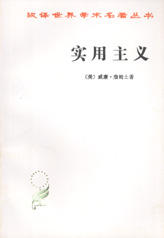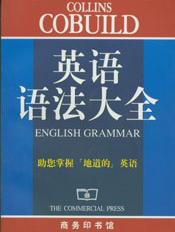牛津实用英语语法-第88章
按键盘上方向键 ← 或 → 可快速上下翻页,按键盘上的 Enter 键可回到本书目录页,按键盘上方向键 ↑ 可回到本页顶部!
————未阅读完?加入书签已便下次继续阅读!
人们指责他为了使计划显得可行而没有如实地把真相说出来。
He took much more trouble over the figures than he usually did in order/so as to show his new boss what a careful worker he was.
为了向新老板显示他是工作非常细心的人,他在这些数字上费了比往常更多的力气。
(但是in order/so as并非必要,有时是可省略的。)
表示目的的不定式位于主要动词之前时,in order/so as可位于句首:
In order/So as to show his boss what a careful worker he was,he took ex- tra trouble over the figures.
为了向新老板显示他是个工作非常细心的人,他在这些数字上费了比平常更多的力气。(但这里的in order/so as也可以省略。)
5 句中有一个间接宾语而要想让不定式毫不含混地指主语时,可用so as/in order:
He sent his sons to a boarding school in order/so as to have some peace.
为了图清静,他把他的儿子们送进了寄宿学校。(这里是指他要清静,而不是他的儿子们。)
比较:
He sent his sons to a boarding school to learn to live in a munity.
为了让儿子们学会在集体中生活,他把儿子们送进了寄宿学校。(是让他的儿子们学会在集体中生活,而不是他。)
但是in order/so as的这种用法不是很普遍,更常说:
He sent his sons to a boarding school because he wanted to have some peace.
他把儿子们送进寄宿学校,因为他想清静点儿。
C in order(不包括so as)可用于强调不定式所表示的是主语脑子里真正想要达到的目的:
—He bought diamonds when he was in Amsterdam!
—That wasn’t surprising.He went to Amsterdam in order to buy dia- monds.
—他在阿姆斯特丹时竟买了一些钻石!
—这并不奇怪,他就是为了买钻石才去阿姆斯特丹的。(不是为了其他目的。)
另外也可用重读第一个动词而省略in order的方法来表示同样的意思:
He'went to Amsterdam to buy diamonds.
他去阿姆斯特丹就是为了买钻石。
D 不定式+名词+介词:
I want a case to keep my records in.
我想要一个盒子来保存我的唱片。
I need a corkscrew to open this bottle with.
我需要一个螺丝刀来打开瓶塞。
注意:这里谈论的是特指的目的。
关于泛指的目的可用for+动名词结构来表示:
This is a case for keeping records in.
这是用来保存唱片的盒子。
A corkscrew is a tool for opening bottles.
螺丝刀是用来开启瓶塞的工具。
?
'Amber demo'
335 用于go和e之后的目的不定式
?
一般在祈使语气或go和e的不定式之后不再使用目的不定式。常用Go and find Bill(去把比尔找来)来代替Go to find Bill;用e and talk to Ann(来跟安说说话)来代替e to talk to Ann。即:两个祈使动词用and连接起来时可代替一个命令+目的不定式。
在一般情况下说:
I must go and help my mother.
我必须去帮助我母亲。
I’ll e and check the accounts.
我将来清理账目。
而不是说:
I must go to help my mother.
I’ll e to check the accounts.
即:用and连接两个不定式结构来代替不定式+目的不定式结构。(参见第246节Ⅰ。)
但如go和e用做动名词或以任何现在时态和过去时态出现时,应带一个表示目的的不定式:
I’m thinking of going to look for mushrooms.
我想去采蘑菇。
I went to help my mother.
我去帮助母亲了。
I’ve e to check the accounts.
我来查账来了。
I didn’t e to talk to Bill;I came to talk to you.
我不是来跟比尔说话的;我是来跟你说话的。
?
'Amber demo'
336 目的从句
?
如目的所指的人与主句中的主语不同,或原主语再次被提到,则必须使用目的从句:
Ships carry lifeboats so that the crew can escape if the ship sinks.
大船上带有救生艇,万一船下沉船员可以逃生。
This knife has a cork handle so that it will float if it falls overboard.
这把刀的柄是用软木做的,万一从船上掉下去,它可以浮在水面上。
A 目的从句常由so that+will/would或can/could+动词原形结构来表示。
这里can/could意为will/would be able to:
They make£10 notes a different size from£5 notes so that blind people can(=will be able to)tell the difference between them.
他们把十英镑的纸币和五英镑的纸币做成不同大小,以便使盲人可以区分开来。
They wrote the notices in several languages so that foreign tourists could (=would be able to)understand them.
他们把通知用几国文字写出来,以便让各国游客都能看得懂。
如句子的主要动词是一般现在时、一般完成时或一般将来时,则都可用can和will。如主要动词是一般过去时,则使用could和would。请看上面和下面这些例句:
I light/am lighting/have lit/will light the fire so that the house will be warm when they return.
我点着/正在点着/已点着/将要点着炉子,以便等他们回来时屋子就暖和了。
I have given/will give him a key so that he can get into the house when- ever he likes.
我已经给/会给他一把钥匙,好让他能随时进来。
I pinned the note to his pillow so that he would be sure to see it.
我把纸条用针别在他的枕头上了,好让他一定能看得见。
There were telephone points every kilometre so that drivers whose cars had broken down would be able to/could summon help.
每公里都有求援电话点,以便汽车出了毛病时司机可随时呼唤帮助。
如果带can/could的目的从句中省去that,那么这一目的性可能随之消失。He took my shoes so that I couldn’t leave the house(他把我的鞋拿走了,好让我出不了门)意为He took my shoes to prevent my leaving(他把鞋拿走是为了阻止我离开)。但是He took my shoes,so I couldn’t leave the house(他把鞋拿走了,我出不了门)意为He took my shoes;therefore I wasn’t able to leave(他把我的鞋拿走了,所以我不能够出门)。
B so that/in order that/that+may/might或shall/should+不定式结构也可构成目的从句。这种结构仅比上面A中所示的结构更为正规,在意思上是相同的。
注意:so that之后可跟will/can/may/shall或它们的过去式。
in order that或that之后只限跟may/shall或它们的过去式。
that除在戏剧、诗歌及文章中外极少单独使用。
关于时态一致的规定与上文所述相同。下文的句子是很正式的:
We carved their names on the stone so that/in order that future genera- tions should/might know what they had done.
我们把他们的名字刻在石头上,为的是让后代们知道他们的事迹。
These men risk their lives so that/in order that we may live more safely.
这些人甘冒生命危险,为的是让我们生活更安全。
在一般现在时中may比shall更常见,shall现已很少用。但在一般过去时中might或should都可使用。对上述形式要有所了解,但并不见得需要用,因为在一般情况下,用so that+ can/could或will/would就足够了。
C 表示否定目的的从句由助动词(will/would或should)变为否定式构成:
He wrote his diary in code so that his wife wouldn’t be able to read it.
为了不让妻子看懂,他用密码写日记。
He changed his name so that his new friends wouldn’t/shouldn’t know that he had once been accused of murder.
为了不让新朋友们知道他曾被控犯有谋杀罪,他改了名字。
Criminals usually telephone from public telephone boxes so that the police won’t be able to trace the call.
罪犯常在公用电话亭打电话,好让警察追查不到电话是从哪儿打来的。
表示否定目的的从句常可用to prevent+名词/代词+动名词或to avoid+动名词来代替:
He dyed his beard so that we should’t recognize him/to prevent us rec- ognizing him/to avoid being recognized.
他染了胡子,好让我们认不出/为了阻止/为了避免我们认出他。(被动态动名词)
She always shopped in another village so that she wouldn’t meet her own neighbours/to avoid meeting her own neighbours.
她经常去另外一个村子购买东西,以免碰到她的邻居/为了避免碰到她的邻居。
与表示否定目的的从句相比,人们更喜欢用这些不定式短语。
?
'Amber demo'
337 in case和lest
?
A in case
1 in case+主语+动词可跟在陈述句或命令句后面:
I don’t let him climb trees in case he tears his trousers.
我不让他爬树,以免撕破裤子。
句子的第一个动作常常是为if从句中的动作所做的准备或是对它采取的预防措施。if从句表示将来可能发生的动作。in case+一般现在时常意为because this may happen/because perhaps this will happe






